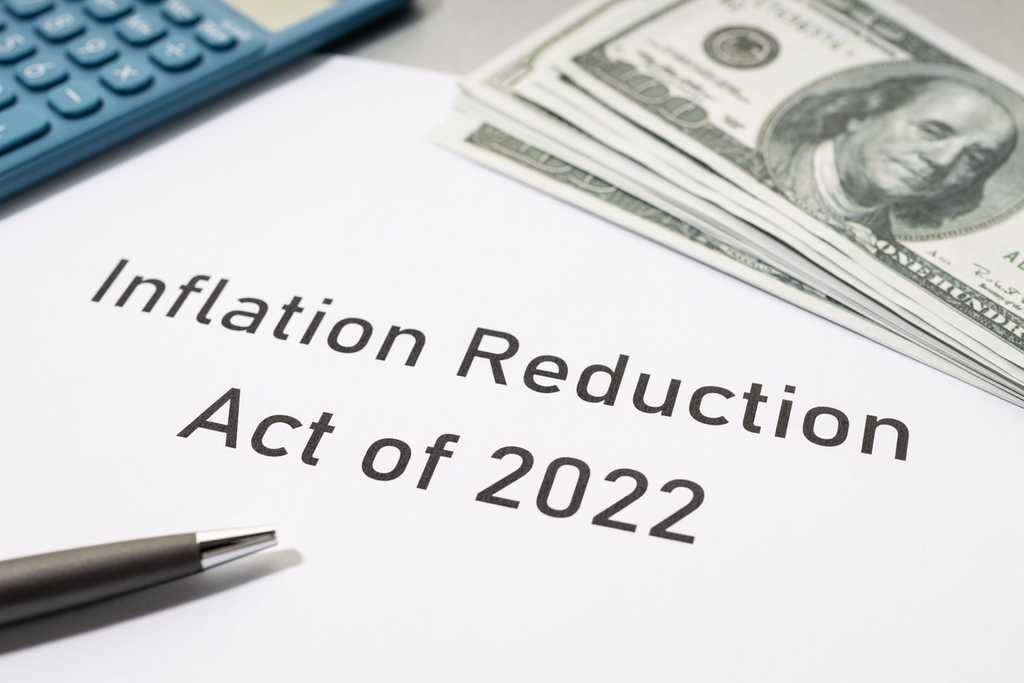If you’re planning to make some energy-efficient home improvements, you should familiarize yourself with the Inflation Reduction Act (IRA). Thanks to this new law, you might be eligible for a government tax credit or rebate when you take measures to improve the energy efficiency of your home, or if you purchase a new or used electric car. Keep reading to learn what the Inflation Reduction Act, what appliances are eligible, and how this new law can help you to save money.
What is the Inflation Reduction Act (IRA)?
The Inflation Reduction Act is a new law that was signed by President Joe Biden on August 16, 2022. If you’re familiar with Biden's Build Back Better initiative, you can think of the IRA as a more trimmed-down version. This law has several aims, including:
- Lower health care costs. The IRA is focused on cutting the cost of prescription drugs and lowering health insurance premiums.
- Reduce the deficit. The IRA is set to achieve hundreds of billions in deficit reduction to help fight high inflation.
- Lower energy costs. Families that purchase clean energy vehicles and energy efficient home appliances can save hundreds or thousands of dollars by taking advantage of tax credits and rebates.
If you’re questioning how all of these initiatives will be paid for, the plan is to raise revenue by making the IRS more efficient and closing some existing loopholes.
The Inflation Reduction Act is an ambitious law, and while there’s a lot to dig into, this article will focus specifically on how the IRA can help lower the cost of energy efficient appliances. So, before you purchase a solar panel for your roof or replace your water heater, make sure you understand which appliances are eligible and how much you can save.
What does the Inflation Reduction Act do for consumers?
According to the Whitehouse, the Inflation Reduction Act is making “the single largest investment in climate and energy in American history,” at $369 billion. The goal is to reduce carbon pollution, create more clean energy jobs, and secure America's position as a world leader in clean energy.
But, how will the Inflation Reduction Act impact individual consumers?
Another aim of the act is to help Americans reduce their energy bills by making homes and vehicles more energy efficient. With the passing of this law, you can potentially save more on green home improvements like replacing your furnace or adding solar panels.
Not only does the Inflation Reduction Act make energy efficient appliances and vehicles more financially accessible to many Americans, but it can also help lower your bills. When you install energy efficient doors, windows, or insulation, you can save money on heating and cooling your home. When you purchase an electric car, you can save money at the gas pump.
Energy efficient home improvement credits
Before the Inflation Reduction Act was signed, a 10% tax credit was available for qualifying energy efficient home improvements and purchases. According to the IRS, qualifying properties were “solar electric property, solar water heaters, geothermal heat pumps, small wind turbines, fuel cell property and … qualified biomass fuel property expenditures.” This was referred to as the Nonbusiness Energy Property Tax Credit and has been rebranded as the Energy Efficient Home Improvement Credit beginning in 2023.
The original Nonbusiness Energy Property Tax Credit was subject to a $500 per taxpayer lifetime limit. While this benefit expired at the end of 2021, the IRA has brought it back to life, extending it through to December 2032 and also adding some modifications to make it even better.
Starting in 2023, the credit rate will increase from 10% to 30% until 2032. The tax credit will drop to 26% for 2033, and then 22% for 2034. The annual taxpayer limit will also increase from $500 to $1,200 with a per-item limit of $600. So, if you purchase one energy efficient appliance you are maxed out at $600. If you purchase more than one qualifying time, you can use the $1,200 limit.
There are also extra perks for those purchasing geothermal and air-source heat pumps or biomass stoves. A biomass stove burns biomass fuel as a way to heat your home or water. If you are on the market for one of these items, the annual credit limit is capped at $2,000.
Appliances incentivized by the IRA
If you want to improve the energy efficiency of your home or you’re on the market for an electric car, here’s a breakdown of some of the specific appliances that are incentivized by the IRA as outlined by The White House.
Windows and doors
You can save money when you reduce energy leakage from your home. Not only can insulating your home help to keep it warmer in the winter or cooler in the summer, but it can also help you save on your energy bill.
Starting in 2023, your family can claim up to $1,200 in credit each year when you install energy efficient windows and doors or if you add insulation. More specifically, a $250 is available for any exterior doors (or $500 for all exterior doors) that meet Energy Star requirements. There is also $600 available for exterior windows and skylights that meet Energy Star efficient certification requirements.
Additionally, the IRA provides funding to cover the cost of a home energy audit (up to $150) to help to determine the best home improvement options for your space.
Solar panels
Tax credits are available to cover up to 30% of the installation costs on rooftop solar panels. By installing a rooftop solar panel, you have the potential to save $300 per year or $9,000 over the lifetime of the system.
Dryers
Need a new dryer for your clothes? Starting in 2023, the IRA provides rebates that can cover up to 100% of the costs of purchasing a new electric clothing dryer for eligible households.
Electric stove or oven
Switching from a gas stove to an electric stove, including induction ranges, can increase energy efficiency and prevent air pollution. For eligible households, IRA rebates can cover up to 100% of the costs of electric stoves, cooktops, ranges, and ovens.
Breaker box
If you need to replace your breaker box to accommodate the installation of new eclectic appliances, there are tax credits and rebates available.
Heat pump
Replacing your furnace or air conditioner with a heat pump is an energy efficient alternative that can save you hundreds of dollars per year on energy bills. A heat pump does the job of a furnace and air conditioner, keeping you warm in the winter and cool in the summer.
In 2022, eligible households can access a $300 tax credit for purchasing a heat pump. Starting in 2023, households can claim 30% of the costs associated with purchasing and installing the pump up to $2,000. Low and moderate-income households are eligible for rebates up to $8,000. If you need to upgrade your home to integrate the new pump, there are rebates up to $4,000 per household. You can find local rebates from the Energy Star Program here.
Electric vehicle
If you’re considering a switch to a more energy efficient vehicle, you can take advantage of tax credits up to $7,500 when you purchase a new electric vehicle and $4,000 for a used electric vehicle.
To meet eligibility requirements, vehicle assembly must take place in North America. You can find a list of electric vehicles assembled in North America on the U.S. Department of Energy website. When you purchase an electric vehicle, it’s estimated that you can save up to $950 per year on fuel costs when you no longer have to fill up at the pump.
How to save with the Inflation Reduction Act
The Inflation Reduction Act aims at confronting the climate crisis and helping American families reduce the cost associated with becoming more energy efficient. There are opportunities to save when you purchase an eligible appliance in the form of tax credits. Reducing the amount of taxes you owe, dollar for dollar can help to improve the affordability of energy efficient products and services.
By improving the efficiency of your home or vehicle, you can also save on your monthly bills. For instance, replacing your old furnace with an energy efficient heating pump can help you save on your monthly heating bill. Transitioning to an electric car can help you spend on fuel when you no longer need to go to the pump. For a list of tax credits, rebates, and savings available in your state, check out the Database of State Incentives for Renewable & Efficiency website.

